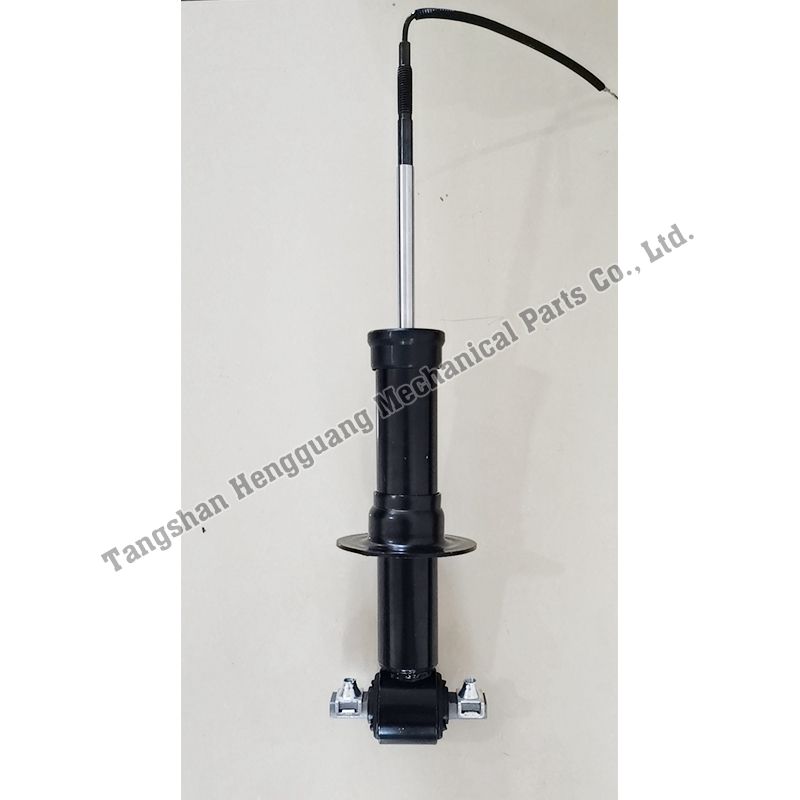May. 30, 2023
Automobiles & Motorcycles
Introduction: While driving, you may have noticed how your vehicle smoothly glides over bumps and uneven terrain, thanks to an often overlooked but essential component: the shock absorber. These unsung heroes of the suspension system play a crucial role in ensuring a comfortable and controlled ride. In this article, we will delve into the world of shock absorbers, exploring their function, construction, types, and their significance in maintaining vehicle stability, handling, and passenger safety.
The Function of Shock Absorbers: Shock absorbers, also known as dampers, are hydraulic devices designed to control the movement of a vehicle's suspension system. They work in conjunction with the springs to absorb and dissipate the energy generated by bumps, potholes, and other road irregularities. By converting the kinetic energy into heat, shock absorbers prevent excessive bouncing, vibrations, and oscillations of the vehicle. This ensures that the tires maintain optimal contact with the road, providing improved stability, handling, and control. In essence, shock absorbers transform the jolts and shocks from the road into a smoother, more comfortable ride for the driver and passengers.

Construction and Working Principles: Shock absorbers consist of several key components, including a piston, cylinder, hydraulic fluid, and valves. When a wheel encounters a bump, the piston moves up and down within the cylinder, compressing and expanding the hydraulic fluid. The fluid passes through valves, which regulate the flow, thus controlling the movement of the suspension. The design of the valves can vary, determining the characteristics of the auto shock absorber, such as rebound and compression rates. Some shock absorbers also incorporate nitrogen gas to reduce foaming and provide consistent damping performance under varying conditions.
See also:
Types of Shock Absorbers: Shock absorbers come in various types, each designed to cater to specific vehicle applications and desired performance attributes. Common types include twin-tube, monotube, gas-charged, and electronic shock absorbers. Twin-tube shock absorbers feature an inner tube housing the piston and hydraulic fluid, while the outer tube provides a reservoir for the fluid. Monotube shock absorbers have a single tube with a piston and fluid separated by a dividing piston. Gas-charged shock absorbers contain nitrogen gas, which enhances damping performance and minimizes fluid aeration. Electronic shock absorbers utilize sensors and control units to adjust damping characteristics in real-time, providing adaptive suspension systems for enhanced handling and comfort.
Importance of Regular Maintenance: To ensure optimal performance and longevity, regular maintenance of shock absorbers is essential. Over time, these components can wear out due to constant exposure to road conditions, contaminants, and temperature changes. Neglected or damaged shock absorbers can lead to reduced vehicle stability, increased braking distances, and compromised handling. It is advisable to follow the manufacturer's recommended maintenance schedule and have the shock absorbers inspected by a qualified technician. Prompt replacement of worn-out or faulty shock absorbers will not only restore ride comfort but also contribute to improved vehicle control, reduced wear on other suspension components, and enhanced overall safety.
Conclusion: Adjustable Shock absorbers may be hidden beneath your vehicle, but their impact on your driving experience and safety is undeniable. Understanding their function, construction, and types enables you to appreciate their significance in maintaining a smooth, controlled ride. Regular maintenance and timely replacement of worn-out shock absorbers ensure optimal performance, improved handling, and enhanced passenger comfort. So, the next time you enjoy a comfortable ride, remember to acknowledge the unsung heroes working tirelessly beneath your vehicle's surface.
Previous: 9 Factors in Choosing an Oil Seal
If you are interested in sending in a Guest Blogger Submission,welcome to write for us!
All Comments ( 0 )